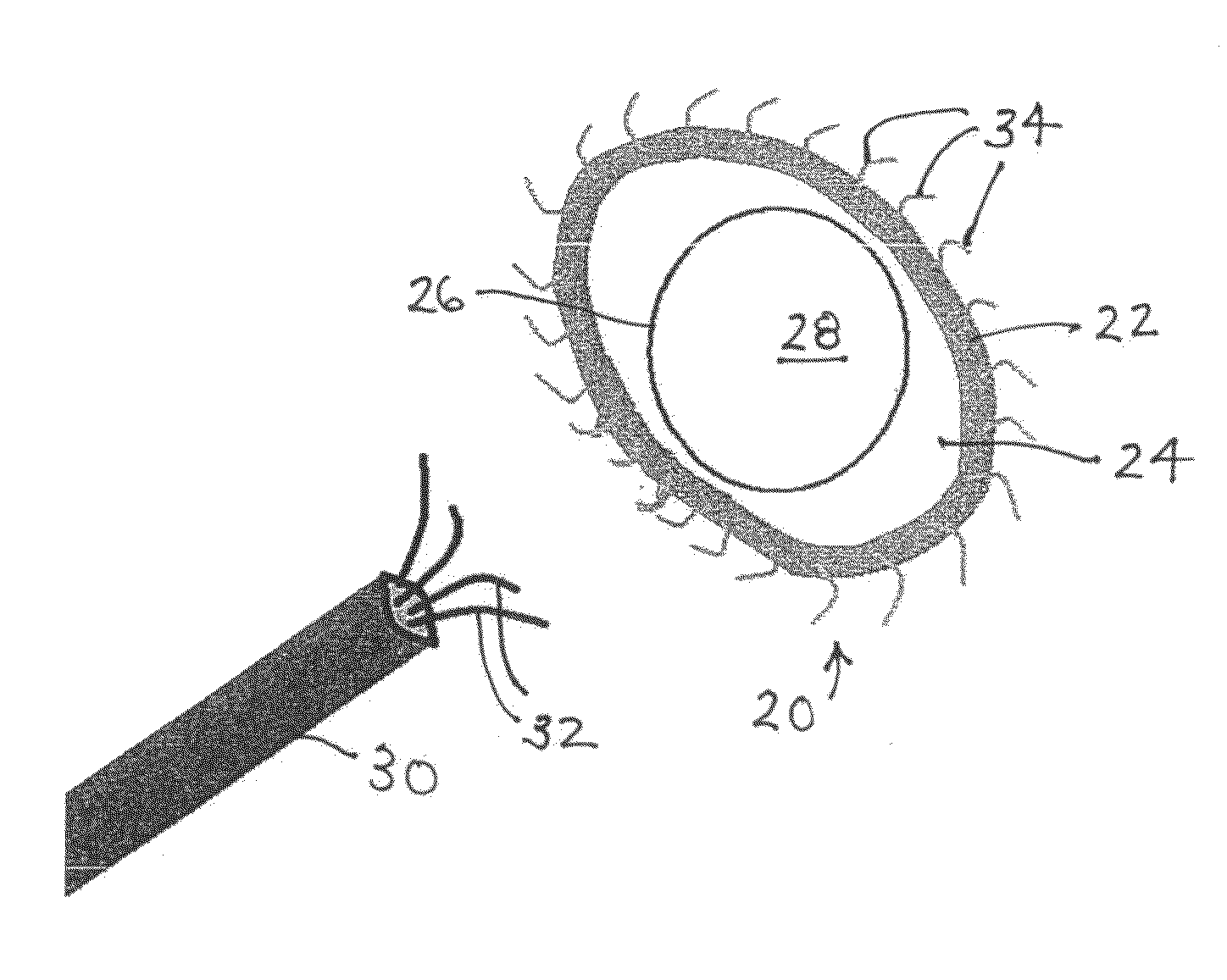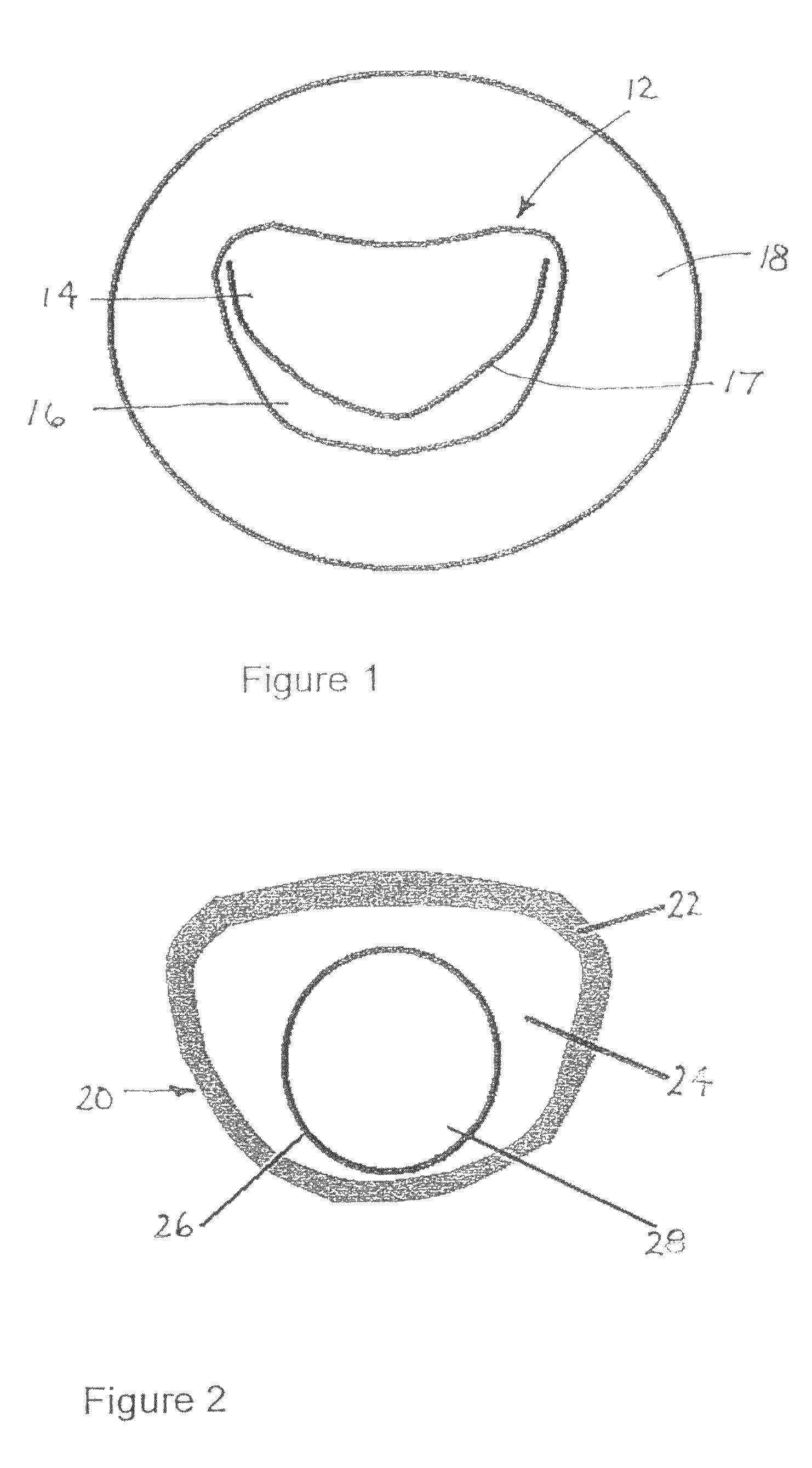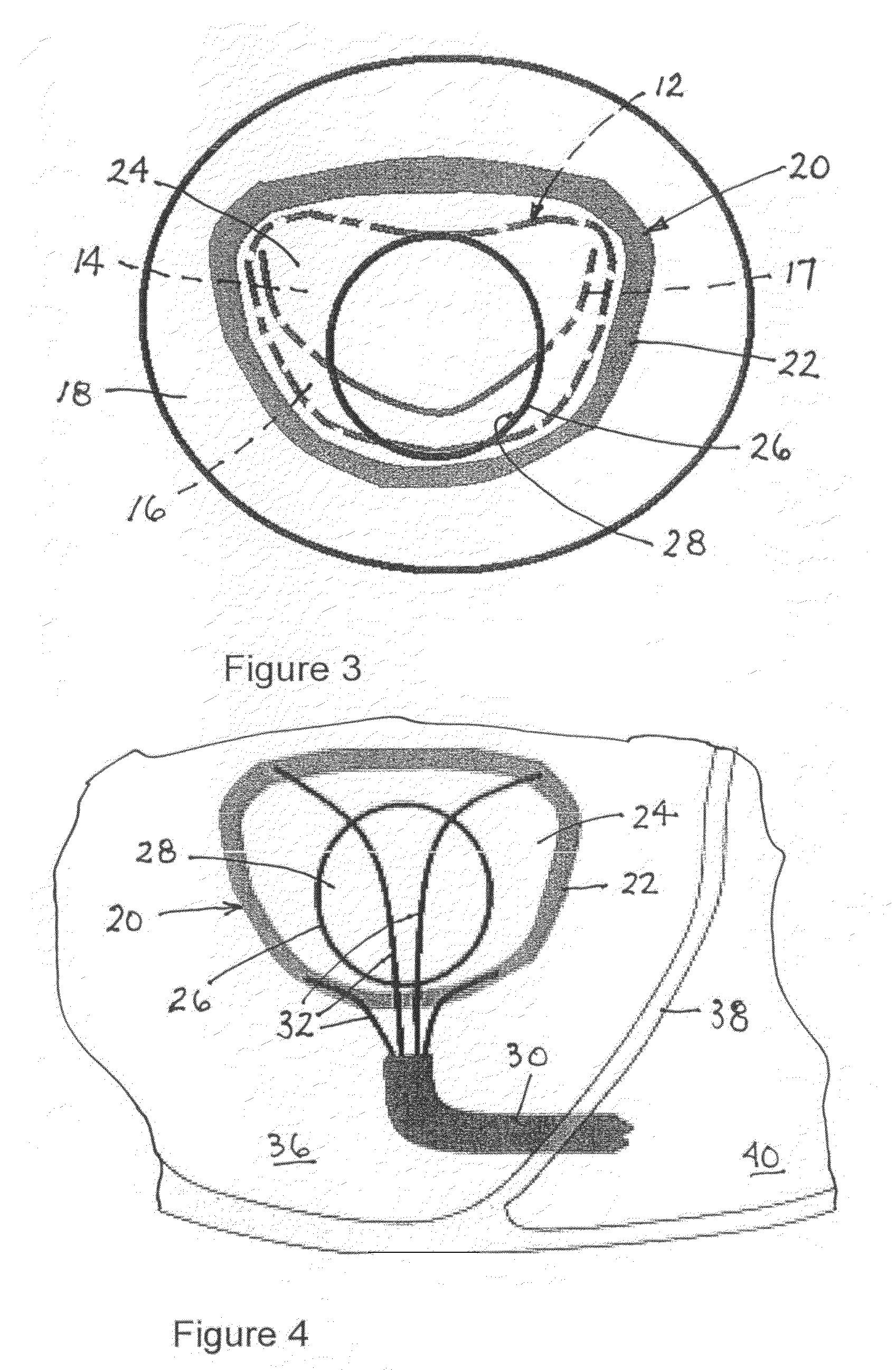Implantable scaffolding containing an orifice for use with a prosthetic or bio-prosthetic valve
a technology of prosthetic or bioprosthetic valves and scaffolding, which is applied in the field of replacement of heart valves, can solve the problems of affecting the efficiency of the heart to pump adequate blood flow, and affecting the function of the hear
- Summary
- Abstract
- Description
- Claims
- Application Information
AI Technical Summary
Benefits of technology
Problems solved by technology
Method used
Image
Examples
Embodiment Construction
[0106]The Summary and Brief Description of the Drawings above are incorporated and reiterated herein.
[0107]As depicted in FIG. 1, a mitral valve 12 includes a pair of leaflets or valve flaps 14 and 16 that contact one another along a generally D-shaped set of points 17 in a closed state of the valve. On the atrial side of the valve 12, leaflets are continuous with an internal wall 18 of the atrium.
[0108]As depicted in FIG. 2, an implantable valve scaffold or mounting component 20 includes an outer margin or rim element 22, a membranous portion 24, and a generally annular inner margin or rim element 26 defining an orifice 28. Outer margin element 22 and inner margin element 26 are different from one another and spaced in their entireties from one another. Orifice 28 serves as a neo-annulus for receiving or seating a prosthetic or bio-prosthetic valve 42 (FIG. 9). It is contemplated that the valve is a modular or staple article. However, the valve may be custom designed.
[0109]It is to...
PUM
 Login to View More
Login to View More Abstract
Description
Claims
Application Information
 Login to View More
Login to View More - R&D
- Intellectual Property
- Life Sciences
- Materials
- Tech Scout
- Unparalleled Data Quality
- Higher Quality Content
- 60% Fewer Hallucinations
Browse by: Latest US Patents, China's latest patents, Technical Efficacy Thesaurus, Application Domain, Technology Topic, Popular Technical Reports.
© 2025 PatSnap. All rights reserved.Legal|Privacy policy|Modern Slavery Act Transparency Statement|Sitemap|About US| Contact US: help@patsnap.com



